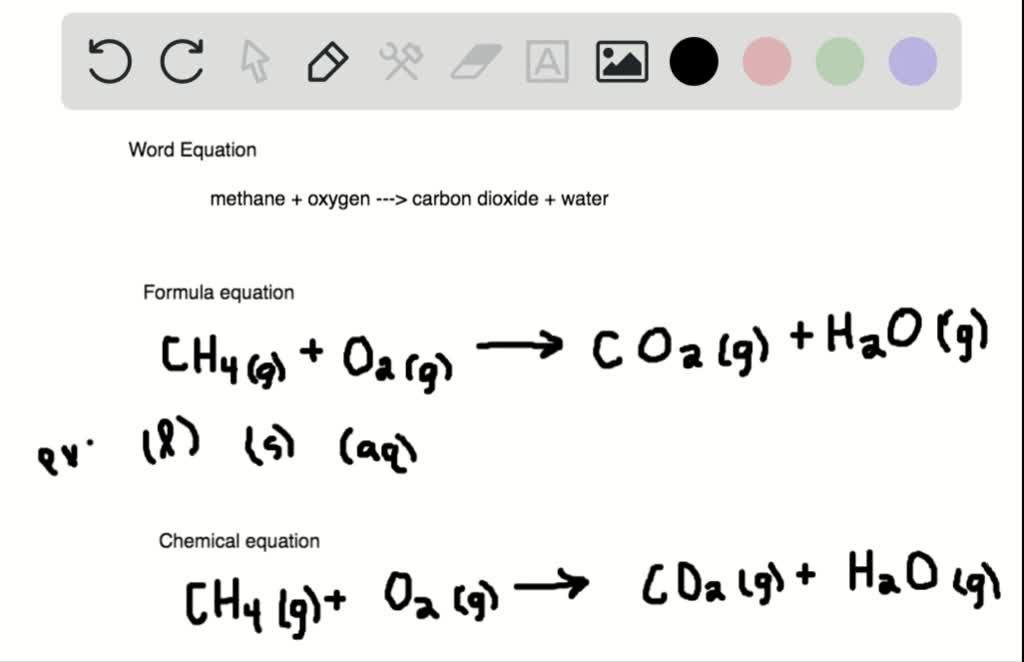
- Chemical equation maker for word how to#
- Chemical equation maker for word full#
1:21 identify an element as a metal or a non-metal according to its position in the Periodic Table. Chemical equation maker for word how to#
1:20 understand how to use electrical conductivity and the acid-base character of oxides to classify elements as metals or non-metals. 1:19 understand how to deduce the electronic configurations of the first 20 elements from their positions in the Periodic Table. 1:18 understand how elements are arranged in the Periodic Table: in order of atomic number, in groups and periods. 1:17 be able to calculate the relative atomic mass of an element (Aᵣ) from isotopic abundances. 1:16 know what is meant by the terms atomic number, mass number, isotopes and relative atomic mass (Aᵣ). 1:15 know the structure of an atom in terms of the positions, relative masses and relative charges of sub-atomic particles. 1:14 know what is meant by the terms atom and molecule. 1:13 practical: investigate paper chromatography using inks/food colourings. 1:12 understand how to use the calculation of Rf values to identify the components of a mixture. 1:11 understand how a chromatogram provides information about the composition of a mixture. 1:10 describe these experimental techniques for the separation of mixtures: simple distillation, fractional distillation, filtration, crystallisation, paper chromatography. 1:09 understand that a pure substance has a fixed melting and boiling point, but that a mixture may melt or boil over a range of temperatures. 1:08 understand how to classify a substance as an element, a compound or a mixture.  1:07 (Triple only) practical: investigate the solubility of a solid in water at a specific temperature. 1:06 (Triple only) understand how to plot and interpret solubility curves. 1:05 (Triple only) know what is meant by the term solubility in the units g per 100g of solvent. 1:04 know what is meant by the terms: solvent, solute, solution, saturated solution. 1:03 understand how the results of experiments involving the dilution of coloured solutions and diffusion of gases can be explained. 1:02 understand the interconversions between the three states of matter in terms of: the names of the interconversions, how they are achieved and the changes in arrangement, movement and energy of the particles. 1:01 understand the three states of matter in terms of the arrangement, movement and energy of the particles.
1:07 (Triple only) practical: investigate the solubility of a solid in water at a specific temperature. 1:06 (Triple only) understand how to plot and interpret solubility curves. 1:05 (Triple only) know what is meant by the term solubility in the units g per 100g of solvent. 1:04 know what is meant by the terms: solvent, solute, solution, saturated solution. 1:03 understand how the results of experiments involving the dilution of coloured solutions and diffusion of gases can be explained. 1:02 understand the interconversions between the three states of matter in terms of: the names of the interconversions, how they are achieved and the changes in arrangement, movement and energy of the particles. 1:01 understand the three states of matter in terms of the arrangement, movement and energy of the particles. 
Public class WordReadTextWithFormulasAsHTML else if (ibodyelement.getElementType().equals(BodyElementType.
Chemical equation maker for word full#
Needs the full ooxml-schemas-1.4.jar as mentioned in There also is described where the OMML2MML.XSL comes from. The transformation from Office MathML into MathML is taken using the same XSLT approach as in Reading equations & formula from Word (Docx) to html and save database using java. The following example uses the XmlCursor to get text runs together with OMath elements from the paragraph. If one wants get those OMath elements in context with the other elements in the paragraphs, then using a is needed to loop over all different XML elements in the paragraph.

This takes the OMath elements out of the text context.

It uses paragraph.getCTP().getOMathList() and paragraph.getCTP().getOMathParaList() to get the OMath elements from the paragraph. In Reading equations & formula from Word (Docx) to html and save database using java I have provided an example which gets all Office MathML equations out of an Word document into HTML. If the needed format is HTML, then Word text content together with Office MathML equations can be read the following way.








 0 kommentar(er)
0 kommentar(er)
